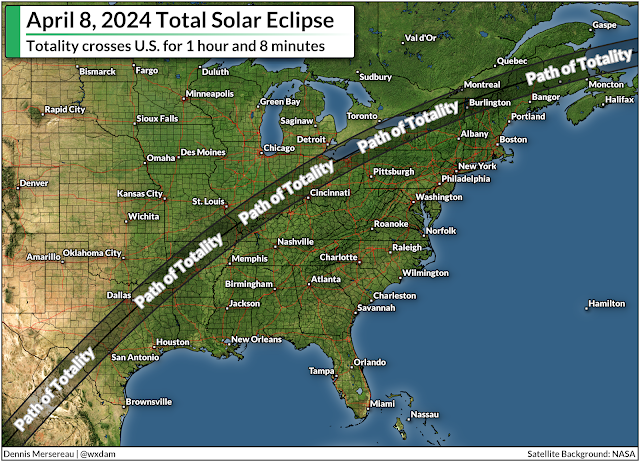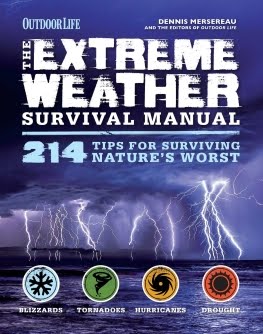One active pattern after another sweeping across the U.S. this season will just keep on going as we head into the start of the Memorial Day weekend.
The Storm Prediction Center (SPC) issued a moderate risk, a level 4 out of 5, for much of Oklahoma and Kansas on Saturday as widespread severe thunderstorms are expected to develop across the region.
"Strong to violent tornadoes" are possible, the SPC said in its forecast on Friday afternoon.
The Setup
Fresh on the heels of a low-pressure system that generated powerful tornadoes comes...yet another low-pressure system that could generate powerful tornadoes.
Forecasters expect a low to quickly develop and strengthen over the central Plains during the day Saturday.
 |
| Image: Twister Data |
Ample heat and humidity over the southern Plains, combined with lift provided by the approaching low and strong wind shear aloft, will set the stage for widespread severe thunderstorms from northern Texas through southern Nebraska.
The model graphic above from TwisterData.com is valid for about 7:00 p.m. CDT on Saturday, showing the Energy Helicity Index (EHI).
EHI is a parameter that takes into account both instability and wind shear. Values above 2.00 are sufficient for supercells, with higher values indicating a more favorable environment for supercells that could produce tornadoes. It's not hard to see how favorable the setup is for tornadic and hail-producing supercells on Saturday afternoon and evening across the areas highlighted by the SPC.
The worst of the weather is expected across much of Oklahoma, Kansas, and far western Missouri. This includes Oklahoma City, Tulsa, Wichita, and Kansas City.
The Risk
The SPC's moderate risk is in effect due to the potential for all modes of significant severe weather across the region.
TORNADOES: A growing risk for intense and long-lived tornadoes will exist within any discrete supercell thunderstorms that form away from other clusters of storms. These supercells could also produce very large hail the size of golf balls or larger.
WINDS: As the evening wears on, and as we so often see, those individual thunderstorms will begin to merge into one or more squall lines that races east through the overnight hours. These lines will carry a risk for widespread damaging winds with gusts of 75+ mph possible. There is a risk for fast-moving embedded tornadoes within these squall lines. Damaging winds are a particular risk through areas like Tulsa, Wichita, and Kansas City.
TIMING: Thunderstorms will begin to bubble through the western half of the risk area during the day on Saturday. The greatest risk will evolve through the early evening hours, continuing into Saturday night and the wee morning hours Sunday.
Safety Tips
Be proactive. Don't let storms take you by surprise. Keep an eye on the radar and local news for live storm coverage, and stay aware of storms heading in your direction.
Make sure you have a way to receive severe weather warnings the moment they're issued. Take a look at your phone and ensure emergency alerts are turned on for tornado warnings. These free push alerts are proven lifesavers, and they only warn you if your location is included in the warning so you know it's nothing to ignore.
Do not rely on tornado sirens as your first line of defense. Tornado sirens are not meant to be heard indoors. These systems are unreliable and prone to failure.
Form a plan in advance for where you'll seek shelter if you're under a tornado warning. Stay on the lowest level of the building in an interior room, putting as many floors and walls between you and flying debris as possible. Keep blankets, pillows, and a bicycle helmet handy to wear while sheltering.
Manufactured and mobile homes offer no protection from even the weakest tornado. If you're in one of these unsafe structures, have a secondary shelter location in mind and go there before the storms arrive.
Wear closed-toe shoes today to protect your feet if you have to walk through debris.
If you're driving when a tornado warning is issued, do not stop under an overpass. Bridges offer no protection from tornadic winds or flying debris—they actually make the winds stronger. Stopping under a bridge to shelter from a tornado or large hail often causes traffic jams that can lead to serious car accidents or worse if a tornado hits that location.
Follow me on Facebook | Bluesky |
Threads | Instagram | Twitter
Get in touch! Send me an email.
Please consider subscribing to my Patreon. Your support helps me write engaging, hype-free weather coverage—no fretting over ad revenue, no chasing viral clicks. Just the weather.
Get in touch! Send me an email.
Please consider subscribing to my Patreon. Your support helps me write engaging, hype-free weather coverage—no fretting over ad revenue, no chasing viral clicks. Just the weather.













































